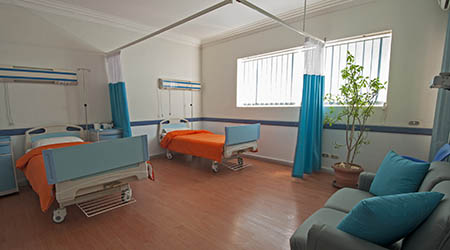The complexity of addressing soft-surface contamination spans far beyond hospital walls and requires cooperation from several parties with varying points of view. Adding to the issue are fragmented and contradictory guidelines and recommendations put forth by professional organizations and regulatory agencies around infection prevention.
Surface selection in healthcare facilities is a foundational issue. Most people think of surfaces as part of the design and construction process rather than part of an infection prevention and control program. When selecting materials, a lot of focus tends to be given to colors and textures. Although these aspects of a surface material are certainly important, there are many other surface properties that are critically important, yet are not thought about or given proper evaluation.
Ultimately, a product design should not be created, initiated, or built without understanding the real-life challenges facing clinicians, specialists, scientists, manufacturers, advocates, and educators. The problems continue to occur when innovative products are put into a healthcare facility to solve a specific problem without input from healthcare professionals who deal with daily challenges.
In order to develop standard protocols and procedures around soft-surface cleanliness, there must be cooperation and participation from all parties involved and gaps must be met:
• Healthcare professionals: Must communicate on-the-ground, real-life challenges and expectations around patient safety and cleaning protocols.
• Facility management: Responsible for accountability of all aspects of hospital operations.
• Supply chain and Value Analysis Professionals: Analyze products to be purchased; consider lifecycle, testing data, etc. to qualify products for use.
• Designers and architects: Must bridge the gap to better understand the needs of hospital operations.
• Product manufacturers and design engineers: Must bridge the gap to better understand the needs of designers, architects, and hospital operations, in order to select proper materials.

 How Efficiency Checklists Help Hospitals Save Energy, Water and Money
How Efficiency Checklists Help Hospitals Save Energy, Water and Money Designing with Heart: Seen Health Center Blends Cultural Warmth and Clinical Care
Designing with Heart: Seen Health Center Blends Cultural Warmth and Clinical Care Rutgers Health and University Hospital Breaks Ground on Campus Expansion
Rutgers Health and University Hospital Breaks Ground on Campus Expansion What to Consider When Modernizing Healthcare Facilities
What to Consider When Modernizing Healthcare Facilities Corewell Health Beaumont Troy Hospital to Build New Tower
Corewell Health Beaumont Troy Hospital to Build New Tower